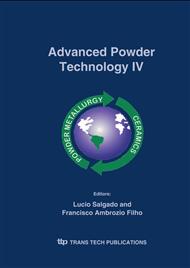p.442
p.447
p.453
p.459
p.464
p.470
p.476
p.482
p.488
The Use of Electrochemical Techniques for Ceramic Filtration Medium Cleaning
Abstract:
Preliminary results of the use of electroomosis technique for removal of organic contaminants in ceramic filtration porous structure are presented. The method employed provokes the migration of chemical residue and waste retained or adsorbed on the pore surfaces by applying a controlled tension within an electrochemical system. Porous ceramics have been the most common filtration medium employed within a broad range of applications. Conventional cleaning of a ceramic medium is not entirely effective for organic contaminants since they cannot be excluded by size, but retained through chemical affinity to the oxide surface. Under the influence of an electrical current, adsorbed molecules underwent shear stress due to the diffuse moving layer. In their ionic state the specimens are dragged and thus move towards the opposite charged electrode. Phenol was chosen as a standard contaminant and tests carried out using commercial ceramic filtration candles. Relative contaminant concentration was assessed by optical densities (UV-Vis spectroscopy). The results show that removal is proportional for up to 58% of the contaminant in diluted condition.
Info:
Periodical:
Pages:
464-469
Citation:
Online since:
November 2005
Authors:
Price:
Сopyright:
© 2005 Trans Tech Publications Ltd. All Rights Reserved
Share:
Citation:


